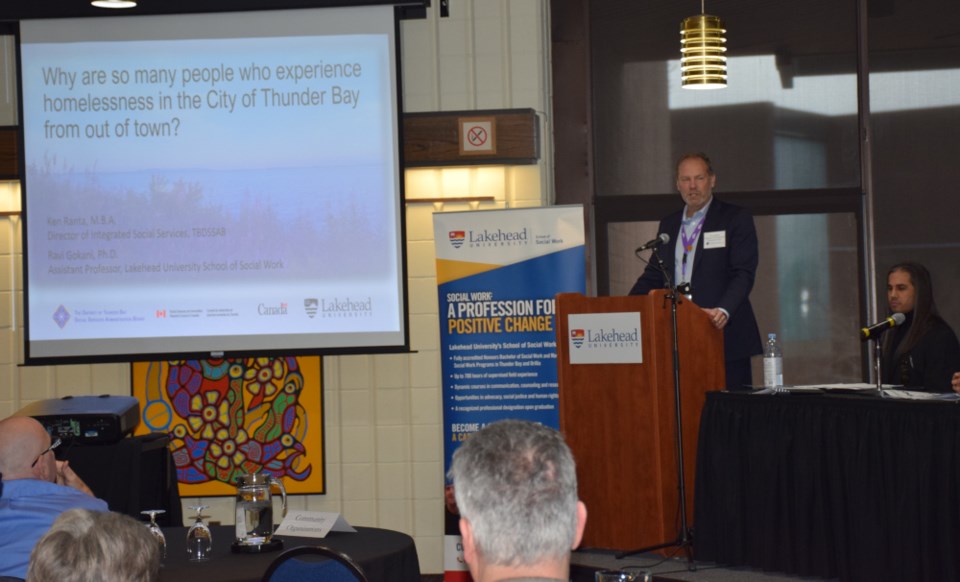THUNDER BAY — People who migrate to Thunder Bay from other parts of Ontario or Canada constitute a high proportion of the city's homeless population.
A new report sheds more light on the issue and could help stakeholders to collaborate on solutions.
While observing that the broader issue of migration and homelessness is generally a poorly understood phenomenon, the authors say their work helps build on knowledge about the issue specific to Northern Ontario.
"This study gives us a preliminary answer to the question of why so many people who experience homelessness in Thunder Bay migrated from somewhere else," said Ravi Gokani, an assistant professor in Lakehead University's School of Social Work.
"We wanted to have some kind of evidence base to direct any sort of modification in policy or programming. That's why we did this study,"
In partnership with the Thunder Bay District Social Services Administration Board, Gokani's team of Lakehead researchers followed up on the Thunder Bay District Social Services Administration Board's point-in-time count of the homeless population conducted in 2018.
That project found that nearly two out of every three homeless individuals in the city were from outside the city, including 20 per cent from outside Ontario.
Gokani's team found that the majority of migrants who became homeless are from the neighbouring districts of Kenora, Rainy River and Cochrane, including a large number from remote First Nation communities.
Out of 98 homeless people who were surveyed for the project, 56 were from a First Nation community in Ontario.
The respondents indicated that they travelled to the city for three main reasons.
"There's the social factor. People have family or friends here, or find a sense of community here ... they're coming here for health care or education ...or they're coming here to look for jobs," Gokani said.
More than half the participants in the study said that they would still be without permanent housing if they returned to their home communities.
One individual, who's from Kenora, said he was sent to Thunder Bay for medical treatment by air ambulance, but now he's "stuck" in the city because he can't afford to leave.
The study team used machine-learning models — a subfield of artificial intelligence — to help it understand what factors predict if a person stays or leaves a shelter.
They determined that there are some strong predictors for remaining in a shelter, including if:
- they migrated to Thunder Bay for education, mental health support or a medical appointment
- they recently received support for mental health or addictions
- they migrated for mental health support and recently received this support
- they migrated for addictions support and recently received this support
Another key finding cited by the study team was that even though migration for job opportunities may be a key driver, the participants were either unable to work, unable to find work or unable to keep work.
They said that as a result of this research, TBDSSAB is now in a better position to pre-emptively address migratory homelessness issues and lessen emergency shelter usage.
"If a clearer picture is realized on why some people come to Thunder Bay and then become homeless, then it opens the door to seeking opportunities to avoid the situation," said Ken Ranta, the social services board's director of integrated services.
Ranta noted that it's instructive to learn whether newcomers travel to Thunder Bay to take advantage of a service or opportunity, or whether they are actually looking to "leave a situation that's untenable for them."
He said "it's not a simple one-answer-fits-all," but the study findings will help TBDSSAB work with partners not only to find ways to reduce the homeless population in Thunder Bay by linking newcomers with supports, but perhaps by meeting the needs of individuals "where they are" before they feel the need to migrate.
The complete report can be viewed online.
